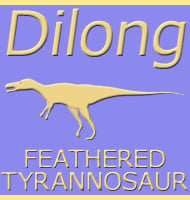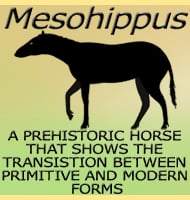In Depth
One of the daphoenine bear dogs that are so far exclusive to North America, Daphoenictis was similar to the type genus of this group Daphoenus. Although definitely a bear dog, Daphoenictis fossils bear a resemblance to cats, something leading to the name Daphoenictis which translates as ‘Daphoenus cat’. Daphoenictis seems to have shared a similar geographical distribution to a species of Daphoenus called Daphoenus lambei. Both Daphoenictis tedfordi and Daphoenus lambei are known from deposits in central southern Canada, spreading all the way down the central United States to Texas. Daphoenictis tedfordi however is dated from the late Eocene whereas Daphoenus lambei is generally known from much earlier in the Eocene. The only fossil deposit which suggests that both Daphoenictis tedfordi and Daphoenus lambei were active at the same time is in Wyoming (Priabonian/Chadronian). Either this represents a cross over point of Daphoenictis tedfordi taking over from Daphoenus lambei, or is merely circumstantial with future fossil discoveries providing a more complete picture.
Further Reading
– Daphoenictis, a cat-like carnivore (Mammalia, Amphicyonidae) from the Oligocene of North America. – Journal of Paleontology 48(5):1030-1047. – R. M. Hunt Jr. 1974.









